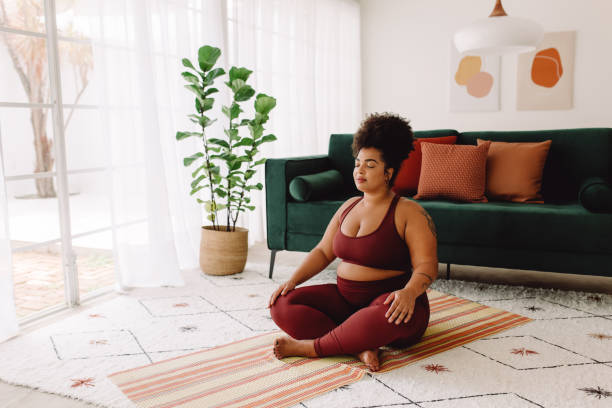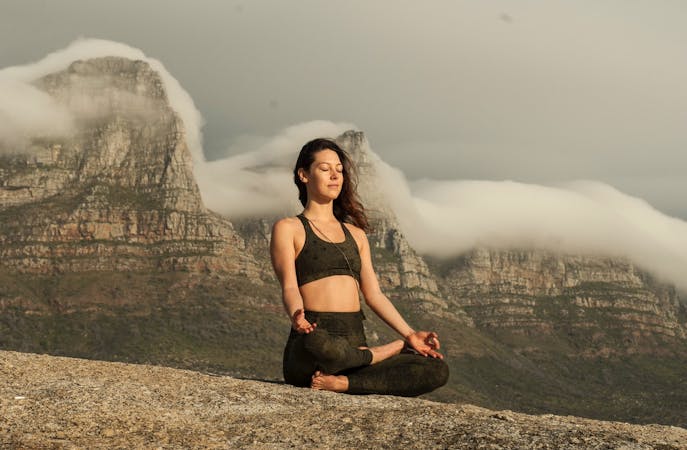How to Meditate? Essential Tips for Busy People
How to Meditate? Essential Tips for Busy People
Blog Article
Exactly How to Meditate: A Step-by-Step Approach to Achieving Mindfulness and Calmness
Meditation serves as a powerful device for achieving mindfulness and emotional calmness in a busy world. By understanding the basic principles and strategies included in meditation, individuals can cultivate a technique that boosts their total health.
Comprehending Meditation
Understanding reflection entails grasping its essential concepts and strategies, which act as the foundation for the practice. At its core, reflection is a psychological exercise targeted at promoting relaxation, constructing internal energy, and establishing concern and insight. The method encourages people to concentrate their attention, frequently via techniques such as deep breathing, visualization, or rule rep.
Reflection can be classified into different designs, including mindfulness, transcendental, and loving-kindness meditation, each with distinctive objectives and methods. Mindfulness meditation highlights present-moment understanding and non-judgmental observation of thoughts and feelings, while transcendental reflection entails making use of specific rules to transcend common idea procedures. Loving-kindness meditation concentrates on establishing an attitude of love and concern towards oneself and others.
Regardless of the technique employed, the key goal continues to be constant: to grow a deeper understanding of the mind and its patterns. This self-awareness fosters psychological durability, clearness of idea, and an extensive feeling of tranquility (How to meditate?). By understanding these methods and principles, individuals lay the groundwork for an effective meditation practice that can dramatically improve their general well-being
Preparing for Your Practice
Before starting your reflection method, it is necessary to create a setting for focus and leisure. Select a silent room where you are unlikely to be disturbed. This can be an edge of a space, a garden, or any type of area that evokes a feeling of tranquility. Guarantee that the location is clean and totally free of clutter, as a tidy atmosphere can help remove the mind.
Take into consideration the lights, as natural light can improve your mood and energy. Soft, cozy lighting is typically a lot more calming than rough fluorescent lights. In addition, choose a comfortable temperature, ensuring that you are neither too warm neither also cool.
Integrating aspects that advertise tranquility can further improve your experience. This may include soft paddings or blankets for comfort, along with soothing scents from important oils or scent. It can likewise be helpful to have a timer set for your meditation session to avoid interruptions from clock-watching.
Standard Meditation Strategies

An additional effective method is body scan meditation. This includes emotionally checking your body from head to toe, noticing any areas of stress or discomfort and knowingly relaxing those muscular tissues. This practice cultivates a much deeper link in between your mind and body.

Finally, loving-kindness reflection concentrates on cultivating empathy towards on your own and others. Silently repeat expressions of a good reputation, enhancing emotional more health and interconnectedness. Each of these strategies acts as a foundation for your reflection journey, allowing you to discover the approach that reverberates best with your individual method.
Preserving Focus and Mindfulness

Developing a committed reflection room can boost the ability to maintain mindfulness. A peaceful, uncluttered setting decreases distractions, enabling much deeper immersion in the practice. In addition, establishing a time restriction can help handle expectations; beginning with shorter sessions might alleviate the shift into longer methods.
Using methods such as body scanning or observing experiences can also boost mindfulness. These techniques motivate experts to stay present and involved with their physicality, securing their interest in the moment. Routine technique is important; the mind builds strength over time, developing a stronger capacity for anonymous focus.
Incorporating Meditation Into Life
Integrating meditation into day-to-day live can transform regular activities into possibilities for mindfulness and self-reflection. By incorporating mindfulness methods right into usual tasks, individuals can grow a greater sense of visibility and peace in the middle of the numerous hours of daily life.
Begin by identifying moments throughout your day where you can practice and stop briefly mindfulness. Throughout your morning commute, focus on your breath or the experiences of the setting around you. In the kitchen area, method cooking as a reflective practice, appreciating the appearances, shades, and aromas of the ingredients. Even mundane tasks like strolling or cleaning dishes can end up being chances for reflection by directing your focus to the sensations of movement and the noises surrounding you.
Additionally, reserving devoted times for reflection can reinforce its practice. Beginning with brief sessions, progressively boosting period as you become much more comfortable. more helpful hints Usage pointers or cues-- like a specific time of day or a soothing noise-- to establish consistency.
Ultimately, the objective is to weave mindfulness into the material of every day life, enabling you to come close to each minute with intention, thus boosting your total sense of well-being and clearness.
Verdict
To conclude, reliable meditation requires a peaceful environment, a comfortable position, and a concentrate on the breath. By permitting thoughts to develop without judgment and constantly rerouting attention to the breath, experts can achieve boosted mindfulness and tranquility. Incorporating different methods, such as body scanning and loving-kindness expressions, can better enrich the method. Routine reflection, even in short sessions, fosters a much deeper link to the existing moment, inevitably resulting in higher calmness and psychological clarity in day-to-day live.
Reflection can be classified into different styles, consisting of mindfulness, transcendental, and loving-kindness meditation, each with unique objectives and approaches. Mindfulness meditation emphasizes present-moment understanding and non-judgmental monitoring of sensations and ideas, while copyright involves the use of specific concepts to transcend average thought processes.With your reflection room prepared, it's time to explore numerous basic reflection techniques that can aid cultivate mindfulness and internal peace.Consistently maintaining emphasis and mindfulness throughout meditation can be tough, specifically for those new to the practice.Establishing a devoted reflection room can enhance the capacity to keep mindfulness.
Report this page